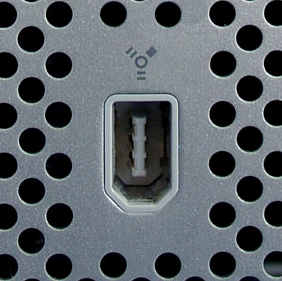Original article: https://www.eset.com/de/about/presse/pressemitteilungen/pressemitteilungen/security-fiasko-32-millionen-computer-in-deutschland-laufen-noch-mit-windows-10/
ESET recommends switching to Windows 11 as quickly as possible. Alternatively, a Linux distribution can also be a good option, especially for older hardware.
66.12% of Windows PCs are still on Windows 10 in Germany, 62.73% worldwide.
https://gs.statcounter.com/os-version-market-share/windows/desktop/worldwide
Linux is really getting a push nowadays, subscription and cloud services have been unexpected allies.
Interesting they would recommend that, I mean it’s pretty cool of them but they sell antivirus software that AFAIK is only available for Windows.
Almost like they care more about giving good advice than making money… Impossible.
Year of the Linux Desktop!
Im Original Artikel ist Linux nur ganz kurz am ende erwähnt, der Titel ist mehr Clickbate als etwas anderes.
Si.
You no habla inglés? x)
Qui
Honestly transition from Win 10 to Win 11 absolutely mess.
I remembered back in old days when people transition from Win Vista to Win 7 without hassle & demand weird system requirements, in the end everyone loves Win 7 even from Linux community itself.
If many tech corpo demanding windows 11 as base support & the choices are limited between upgrade system or install linux, i personally choose linux because in linux every hardware is supported although it’s hard to understand & operate at first but…as time goes by everyone will used it like nothing happenedFor anyone too lazy to check, ESET is a Slovakian cybersecurity company.
Microsoft’s approach to their OS seems to be, “constantly add more stuff that relatively few people want or need, and require everyone to buy new hardware to support it.” The resulting upgrade cycle is needlessly wasteful of people’s money and harmful to the environment.
Meanwhile, the Linux ecosystem is more like, “make new stuff available, but optional, and constantly optimize things to be more efficient.”
I was still gaming and developing software on a ten-year-old computer (with a somewhat newer GPU) until very recently. I’ll let you guess which OS I was using.
I’ll let you guess which OS I was using.
Windows 2000 Professional SP4, obviously.
“constantly add more stuff that relatively few people want or need, and require everyone to buy new hardware to support it.”
This shouldn’t surprise anyone. Windows, Apple and Android, and the companies that develop software that run on Windows, Apple, and Android, have all fallen into the habit of writing unoptimized, bloated code. Replacing a phone or a tablet because it “got old” is the norm now. We all know the only thing in phones and tablets that consistently get old are the batteries, the hardware is almost always fine, but the OSs and the software constantly get upgraded to the point where we don’t even keep track of the version numbers anymore (when was the last time you looked at the version number of Firefox?) A 6-year-old tablet is effectively junk because everything that used to run on it has been “upgraded” so many times. It’s like trying to run Crysis on a 486.
This shouldn’t surprise anyone. Windows, Apple and Android, and the companies that develop software that run on Windows, Apple, and Android, have all fallen into the habit of writing unoptimized, bloated code
Same goes for anyone who develops software that runs on Linux or more importantly, the Web. Unless we’re talking about command line utilities, which truly are bloatless. But they’re that way on MacOS too.
The issue is that 99% of the time you want your user interface to be graphical, and you want it to run on multiple platforms, unless you’re a Windows-only shop (realistically the only operating system you can afford to have as the ONLY target). But every OS has different libraries and frameworks for native GUI, so your options are Web technologies and either run it in the browser or package it in Electron, or a cross-platform native GUI framework. Those inevitably have worse performance than truly platform-native code, but not as bad as Electron. Inevitably, everything is running on Electron because it’s just easier to take your existing web app and repurpose it for desktop via Electron than develop two separate apps. And the web app itself, without Electron, is already shit. Why is it shit? Because Javascript is shit, the DOM is shit, everything is shit. We’ve been adding more and more and more to tech from the 1990s. It keeps growing in complexity and we’re just doomed.
Maybe WASM will fix parts of this, but at present time you can’t write a full web application in WASM without any Javascript involved. And you still have the DOM, and probably CSS, etc… All of which just suck ass.
Now, you CAN write an efficient UI in pure Javascript, maybe using jQuery, but not a big framework like React or Vue… But then you’ll find out duplicating so much work, it’ll take 3-5x as long to ship the product.








